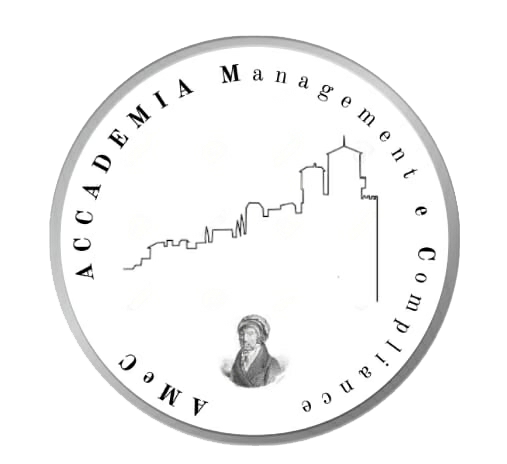AMEC RISK ASSESSMENT METHODOLOGY
Anti-Money Laundering (AML) initiatives consist of laws, regulations, and procedures designed to prevent criminals from converting money obtained through illegal activities, or “dirty money,” into legitimate income, or “clean money”.
The term “dirty money” originated in the time of Al Capone, who “laundered” money earned from illegal activities through a chain of laundromats.
Money laundering consists of three stages: placement, layering, and integration.
Placement
is the act of introducing dirty money into a financial system, such as a bank account or a business. Some examples of placement methods include mingling funds with legitimate revenue (e.g., cash transactions), paying debts with dirty money, gambling, real estate investments, smuggling, and foreign currency exchanges.
Layering
hides the source of the money through various covert accounting maneuvers that are difficult to trace. Layering often involves international transfers, especially to countries with laws that protect account holders’ privacy. The money is usually split and moved multiple times, making it nearly impossible to trace back to the original source.
Integration
occurs when the now-clean money is withdrawn and deposited into a “clean” bank account. The money can then be used for any purpose.
Anti-money laundering laws address a limited amount of money laundering and criminal activities; however, the implications are far-reaching. For instance, AML regulations require financial institutions that issue credit or accept customer deposits to monitor customer behavior to ensure they do not facilitate money laundering activities. Failure to comply with these laws and regulations can be costly for banks, resulting in heavy fines and other legal actions.
AMeC has developed a specific anti-money laundering compliance program (risk assessment).
The AML compliance program is also designed to identify and respond to risks related to money laundering, as well as terrorist financing and fraud.
To achieve this, companies must meet a series of requirements. There are five fundamental elements of anti-money laundering that help an organization achieve AML compliance:
- Appoint an AML compliance officer.
- Establish internal policies and procedures.
- Implement ongoing AML program training.
- Provide an independent review, conducted by third parties.
- Conduct customer due diligence (know your customer and validate them).
The Anti-Money Laundering Risk Assessment aims to analyze the activities related to preventing the risk of money laundering and combating the financing of international terrorism through the oversight of the AML Function.
The assessment allows verification of the accurate application of all primary and secondary regulations, mandatory requirements to be fulfilled, the control process, the procedures of the information system, the operational profiles of due diligence in every aspect, and the risk measurement model activated to protect and safeguard the bank’s money laundering risk, providing therefore a highly reliable evaluation regarding the adequacy of the entire anti-money laundering system.
Below is a checklist of interventions to be activated during the assessment:
STRUCTURE AND RESPONSIBILITIES
- List Of Functions And Roles Involved
OBLIGATION OF CUSTOMER DUE DILIGENCE
- Due Diligence – General Principles
- Content Of The Due Diligence Obligations:
- Identification of the customer and the executor
- Identification of the Beneficial Owner
- Verification of the identity of the customer/executor/beneficial owner
- Acquisition of information on the purpose and nature of the relationship
- Ongoing monitoring during the continuous relationship
- Customer obligations
- Record-keeping obligations
- Obligation to refrain and suspend
- Return of any available funds
RISK-BASED APPROACH
- Evaluation criteria concerning the customer
- Evaluation criteria concerning continuous relationships and occasional transactions
- Customer profiling
- Control through external independent lists
ENHANCED DUE DILIGENCE OBLIGATIONS
- Remote operations
- Operations and continuous relationships with politically exposed persons (peps)
- Operations and continuous relationships with countries at high risk of money laundering
- Opening of correspondent accounts with correspondent entities from non-equivalent countries
- Deposits or funds from other states
- Operations involving the use of large-denomination banknotes
- Relationships with “non-profit/onlus” organizations
- Relationships with trusts
- Combating the financing of weapons of mass destruction programs
DUE DILIGENCE – OPERATIONAL COMPLIANCE
- Responsibilities
- Registration system and activation of kyc verification
- Operational processes overseen by the kyc system
- Filing of aml questionnaire
- Calculation of extemporaneous risk profile
- Management, storage, and querying
- Periodic due diligence process for existing customers
- Monthly risk profile calculation
DUE DILIGENCE – CUSTOMERS AND SPECIAL SITUATIONS
- Terrorism combating aimed checks
- Customer not “physically” present
- Politically exposed persons (peps)
- Opening of relationships with numerous operational delegations
- Trust companies possibly present in the client control chain
- Requests for information from foreign banks
- Listed companies
- Funds (mutual funds, real estate, private equity)
- Operational compliance related to the return of financial assets
RECORD-KEEPING OBLIGATIONS
REPORTING OF SUSPICIOUS TRANSACTIONS
- Mandatory Suspicious Transaction Reporting
- Operational Instructions
STAFF TRAINING
AUTOMATED ANTI-MONEY LAUNDERING CONTROLS
PREPARATION OF INTERNAL OPERATIONAL MANUAL
Conclusions
Various bank representatives confirm that, in many cases, the assessment activity still needs to be set up. The secondary regulations issued by Central Banks are extremely pervasive on this matter.
It is necessary to intervene promptly through a thorough, precise, and critical review of one’s anti-money laundering safeguards and the entire control system.
Money laundering risk has now become a business risk (and no longer a systemic one) based on the risk approach that each bank identifies.
From now on, the risk of money laundering and terrorist financing must be managed differently, as it significantly impacts the bank’s continuity and the adequacy of its capital.
University Professor of Advanced Corporate Finance
Customer & Business Assessment AML/CFT – Dual-Use Export Controls – OFAC Regulations
Academic Member of AMeC – Academy of Management & Compliance

